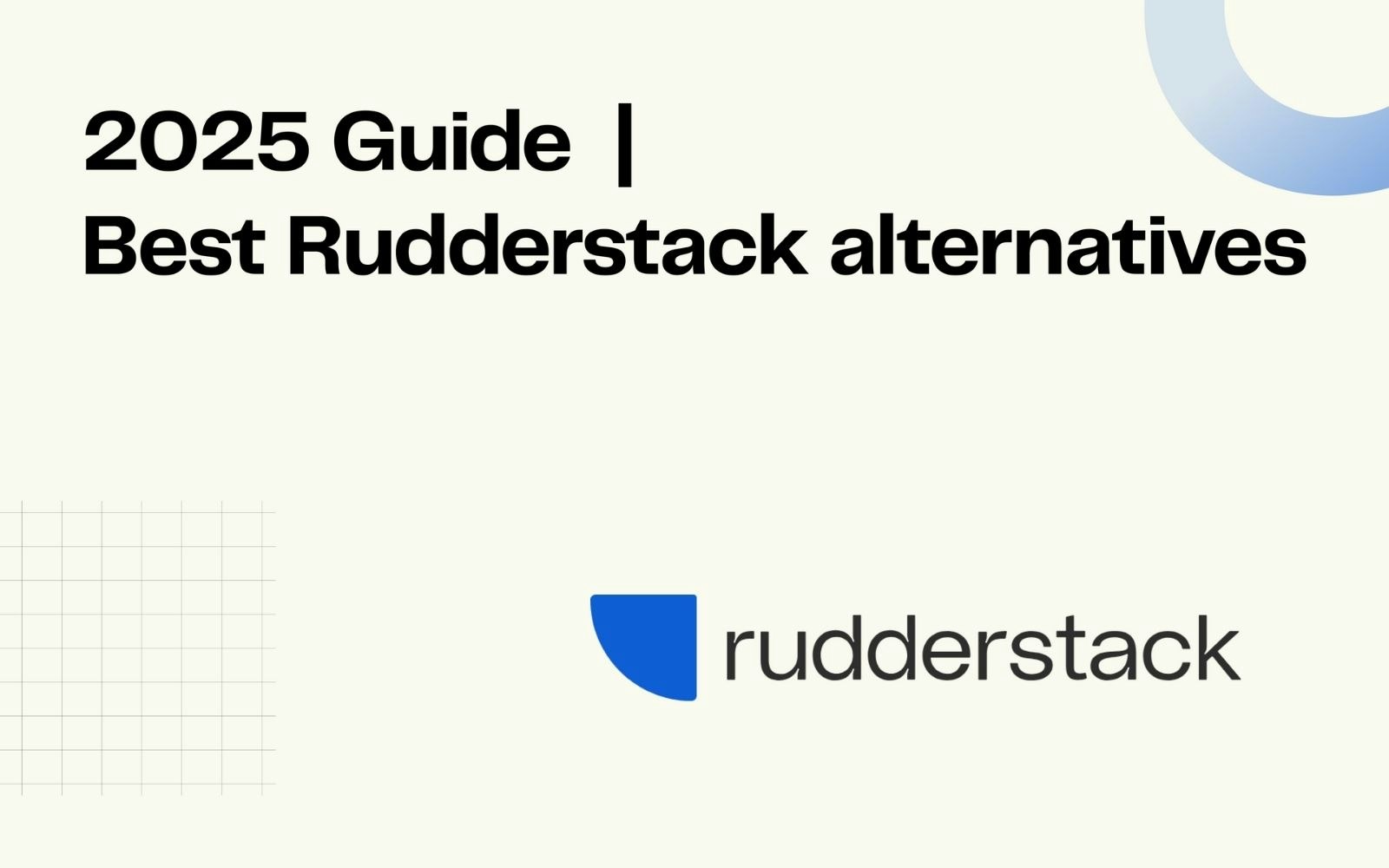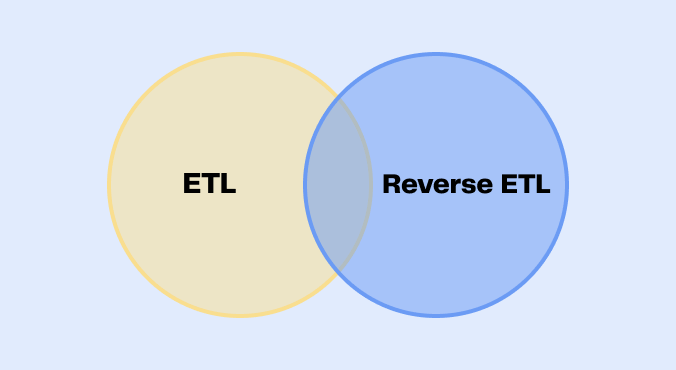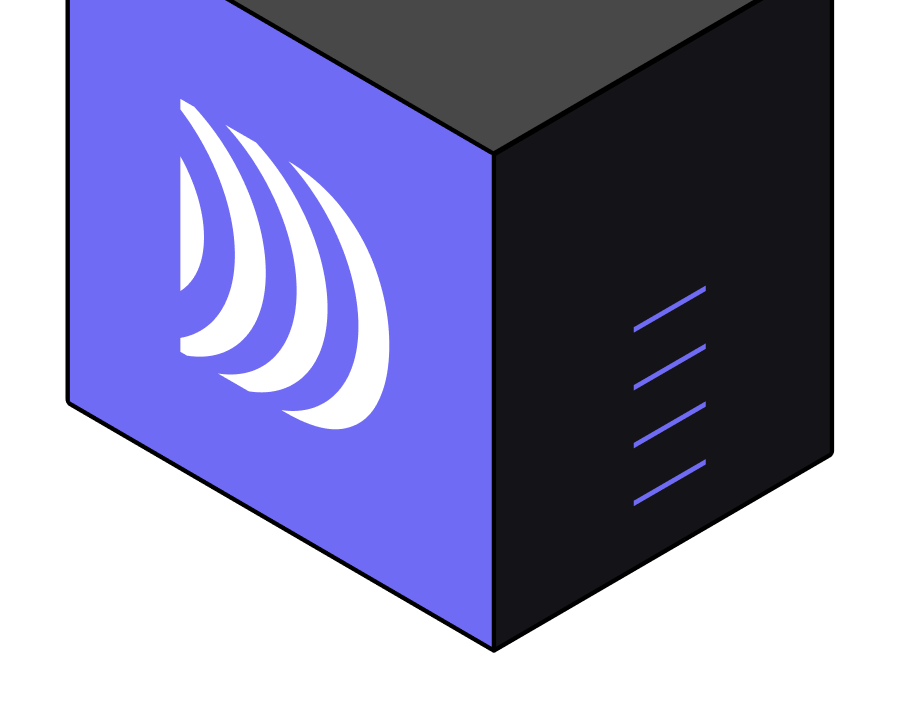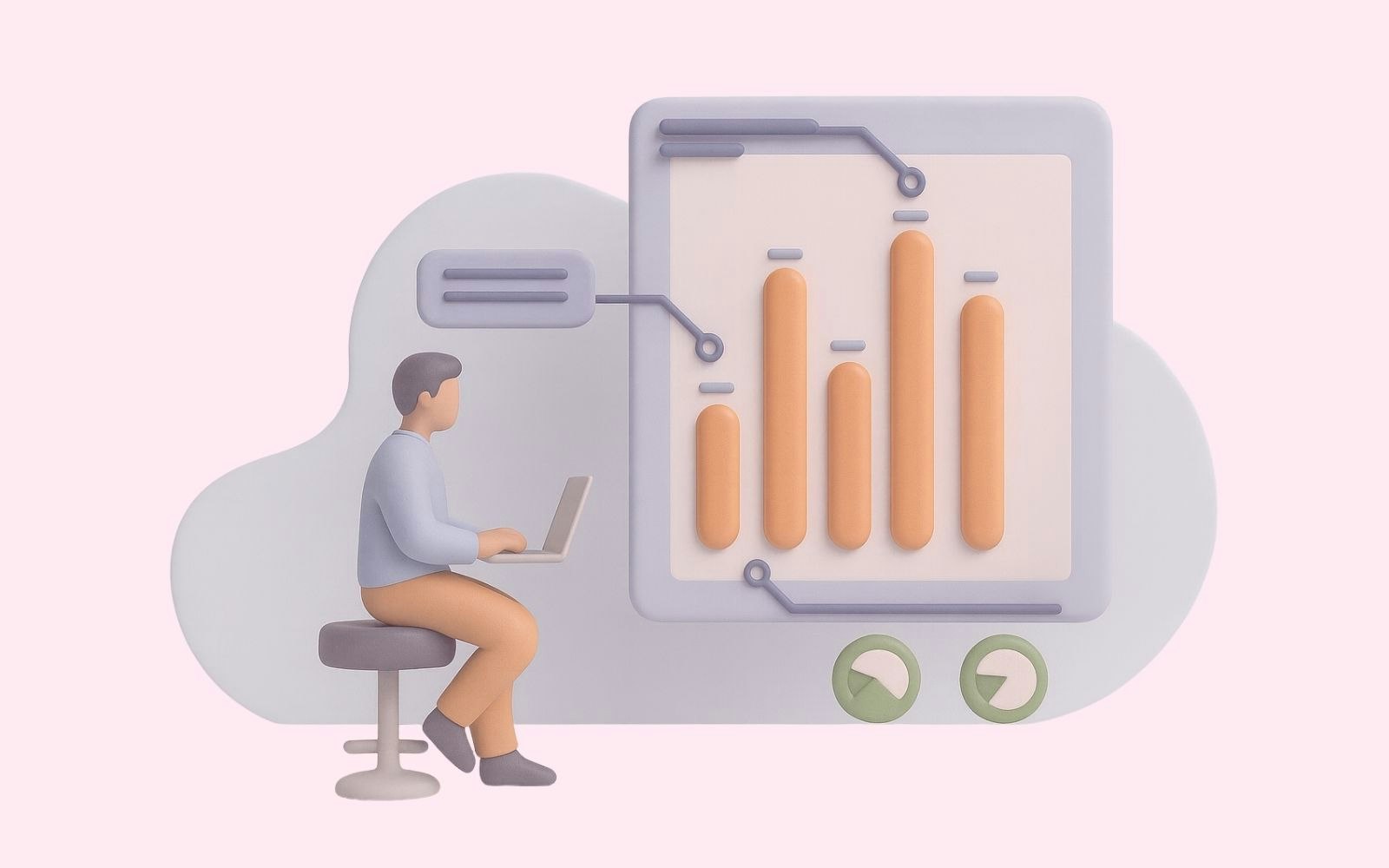
Reverse ETL: Figures and market trends
7min • Last updated on Oct 16, 2025

Olivier Renard
Content & SEO Manager
[👉 Summarise this article using ChatGPT, Google AI or Perplexity.]
Cloud computing has seen explosive growth in just fifteen years. Overall, it is now a market worth nearly $980 billion annually (Statista*). In 2009, fewer than one in ten companies used it; now, 94% do (RightScale).
At the same time, the data pipeline market continues to expand, with an annual growth rate estimated at 20% until 2032 (Fortune Business Insights). This momentum is largely driven by the adoption of data warehouses.
Organisations are seeking to better leverage these vast volumes of cloud-stored data. Reverse ETL meets this need by activating data where it creates value.
Key Takeaways:
Reverse ETL activates data from the cloud directly within business tools. It is a key element of the Modern Data Stack.
The market is experiencing strong growth, driven by the rise of data warehouses and the desire for better data utilisation.
The sector is consolidating: players are expanding their offerings to cover the entire data value chain or to make Reverse ETL the central component of a composable CDP.
Artificial Intelligence is being embedded at every layer of the data stack to enable more accurate and efficient activation. DinMo is a clear example of this shift with its modular and accessible approach.
🔍 What is the size of the Reverse ETL market in 2025? Which players dominate this rapidly evolving segment? Discover the key figures, growth dynamics and major trends that are reshaping data activation. 📈
Reverse ETL: Definition and how it works
Reverse ETL is a process that extracts data stored in a data warehouse (such as Snowflake, BigQuery or Redshift) to make it usable in the everyday tools of business teams.
It operates through five key components: sources (the data warehouse), models (data preparation), segments (groups of customers or events), syncs (sending rules), and destinations (connected business tools).
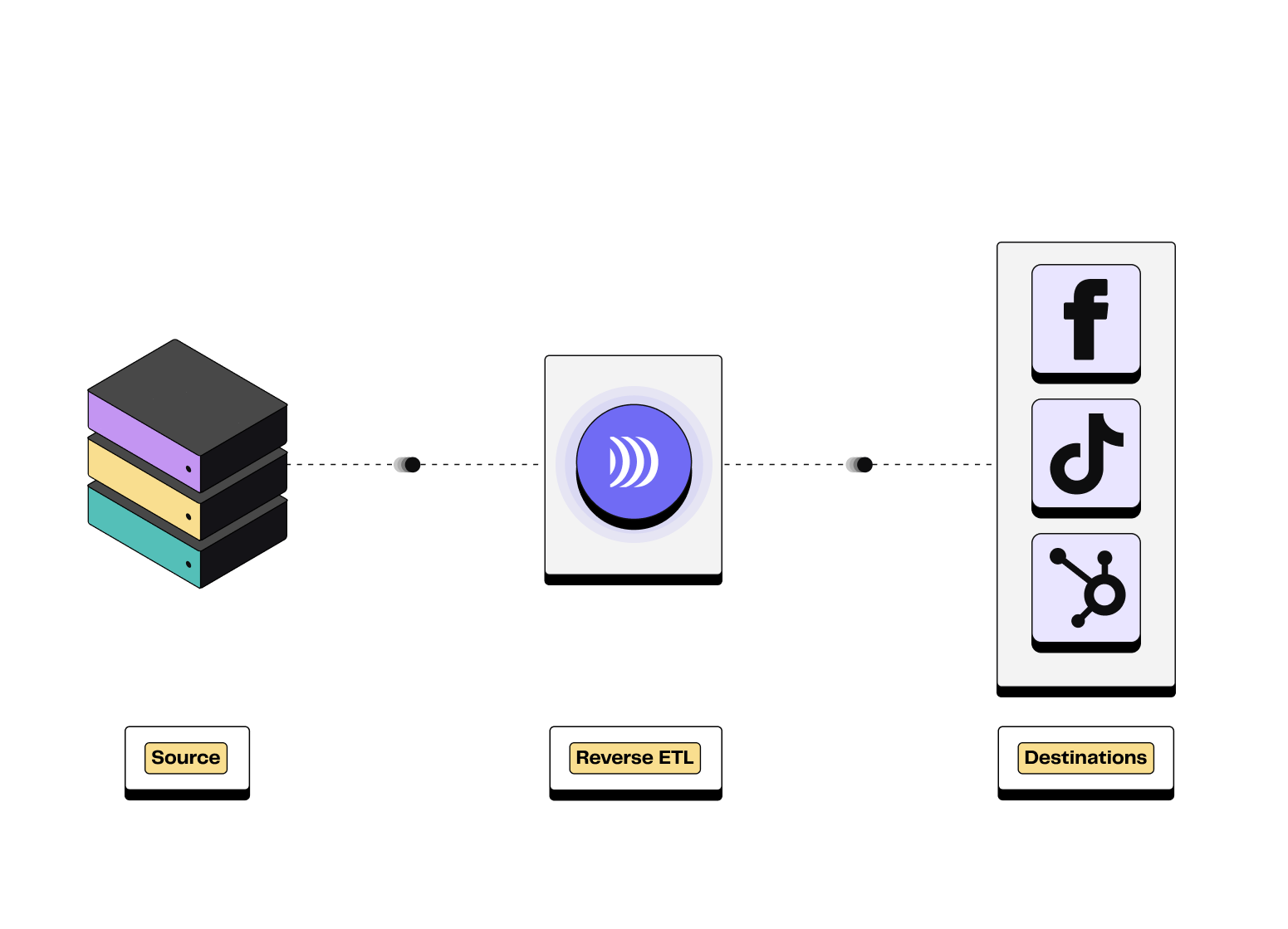
Illustration of Reverse ETL process
It works in the opposite direction of traditional ETL, which sends data into the warehouse.
Use cases are numerous: Marketing campaign personalisation, enrichment of sales tools, churn prediction, automated alerts for customer support and more.
For example, a brand can send churn probability scores calculated in its warehouse to a CRM like Salesforce to launch a retention campaign.
Unlike a traditional Customer Data Platform (CDP), Reverse ETL does not store data but activates it directly from the source. It also differs from an iPaaS, which connects applications together to enable workflow automation.
By making data immediately actionable, Reverse ETL helps companies streamline operations, personalise interactions, and accelerate decision-making at scale.
👉 Let’s now dive into the market trends and figures for Reverse ETL! 📊
A growing market driven by the cloud and the Modern Data Stack
Market size and growth
The Reverse ETL market is seeing spectacular growth. It is estimated to reach $485 million in 2024, with an average annual growth rate of nearly 35% (Data Intelo).
North America accounts for around 41% of the global market, or approximately $199 million, followed by Europe ($131M) and the Asia-Pacific region ($92M).
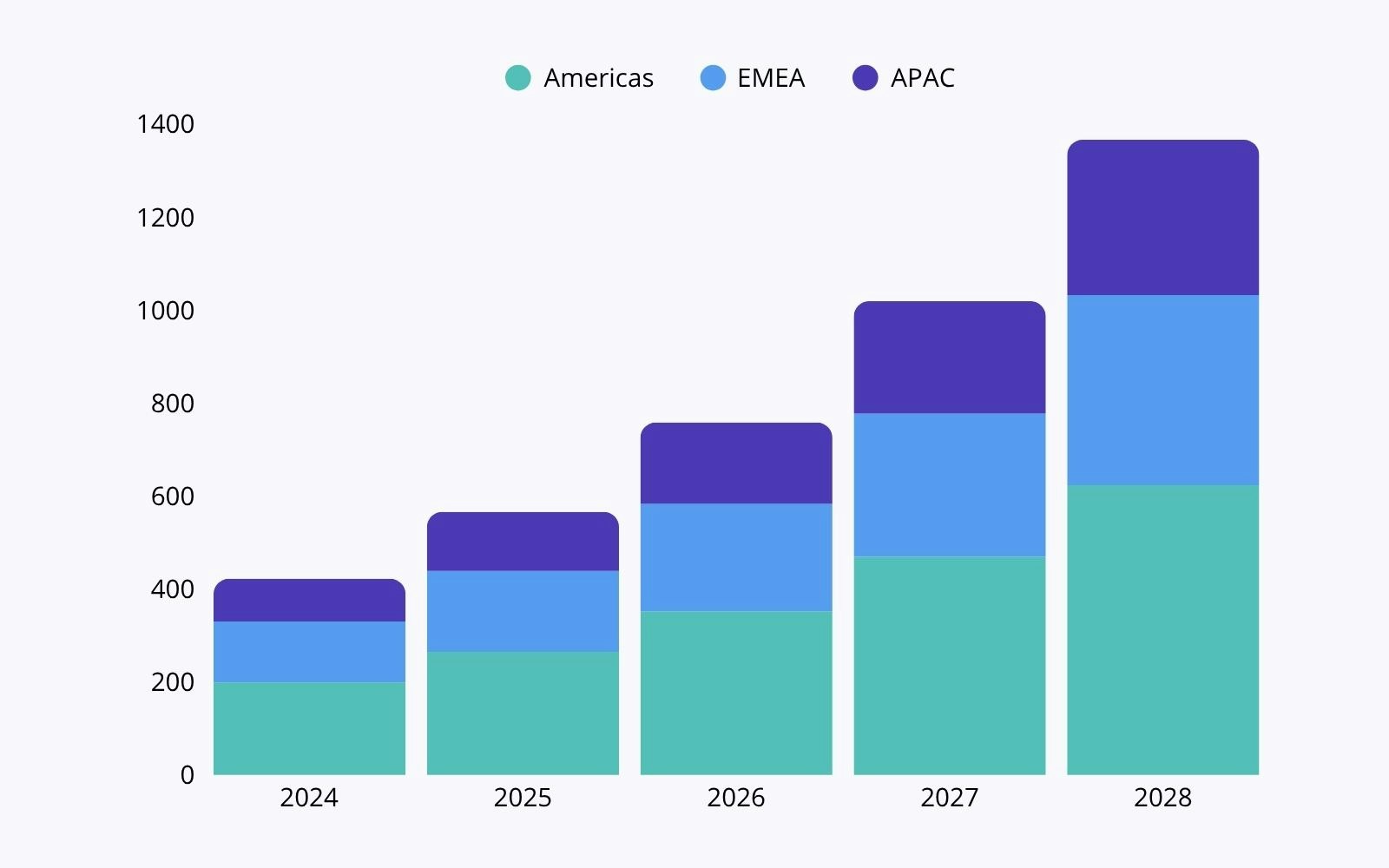
Reverse ETL market by area
This trend reflects a broader movement: companies want to better leverage their data to personalise interactions, steer sales, and support digital transformation.
Early players in the space — Hightouch, Census, and Rivery — laid the groundwork as early as 2018. Since then, new open-source entrants like Airbyte and RudderStack have democratised the technology.
Founded in 2022, DinMo (short for Data in Motion) has become the leading European solution. Our Reverse ETL includes predictive AI features and a no-code interface appreciated by business teams.
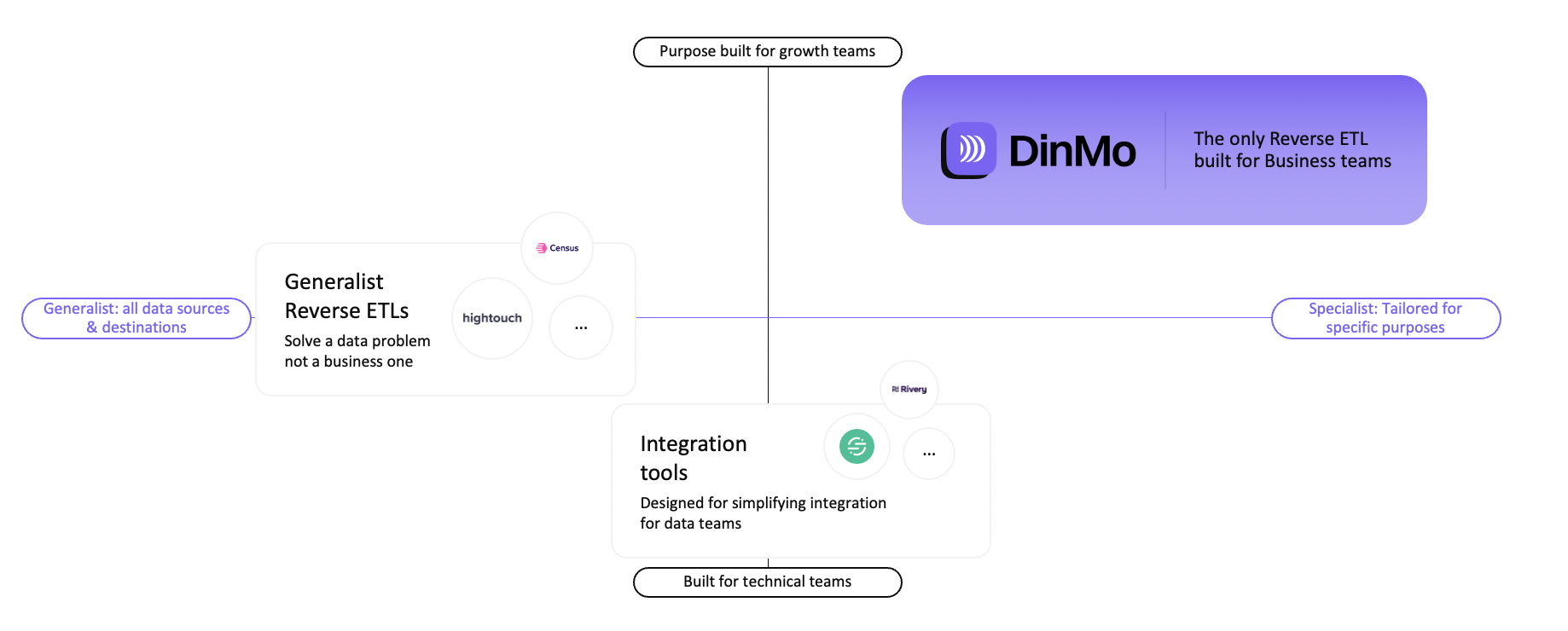
Reverse ETL categories
Adoption fuelled by cloud growth
The development of Reverse ETL closely follows the massive adoption of the cloud. North America holds 39% of the global cloud market, but Asia/Oceania now boasts the fastest growth rate (Grand View Research).
The rise of cloud data warehouses like Snowflake, BigQuery, Redshift or Databricks has made data storage easier, faster and more secure.
The more mature a company is in its data strategy, the more relevant a Reverse ETL becomes — serving as the bridge between warehouse-stored data and its activation in business tools.
Reverse ETL in the Modern Data Stack
Reverse ETL enables marketing, product or support teams to leverage up-to-date data in their daily applications. By enabling activation from a cloud-based infrastructure, it is a core component of the Modern Data Stack.
Artificial Intelligence is now embedded at every level to automate flows, suggest optimal actions, and boost performance. Composable architectures are central to this shift — we now speak of a Modern Data Stack 2.0
Reverse ETL supports this evolution by becoming a true engine of intelligent activation, turning data into growth levers.
A consolidating market
Mergers, acquisitions and product expansion
In recent months, the Reverse ETL market has entered a phase of consolidation. Some established vendors are extending their portfolios to cover the entire data lifecycle.
In May 2025, Fivetran acquired Census, creating an end-to-end data movement platform capable of managing ingestion, transformation and activation.
👇
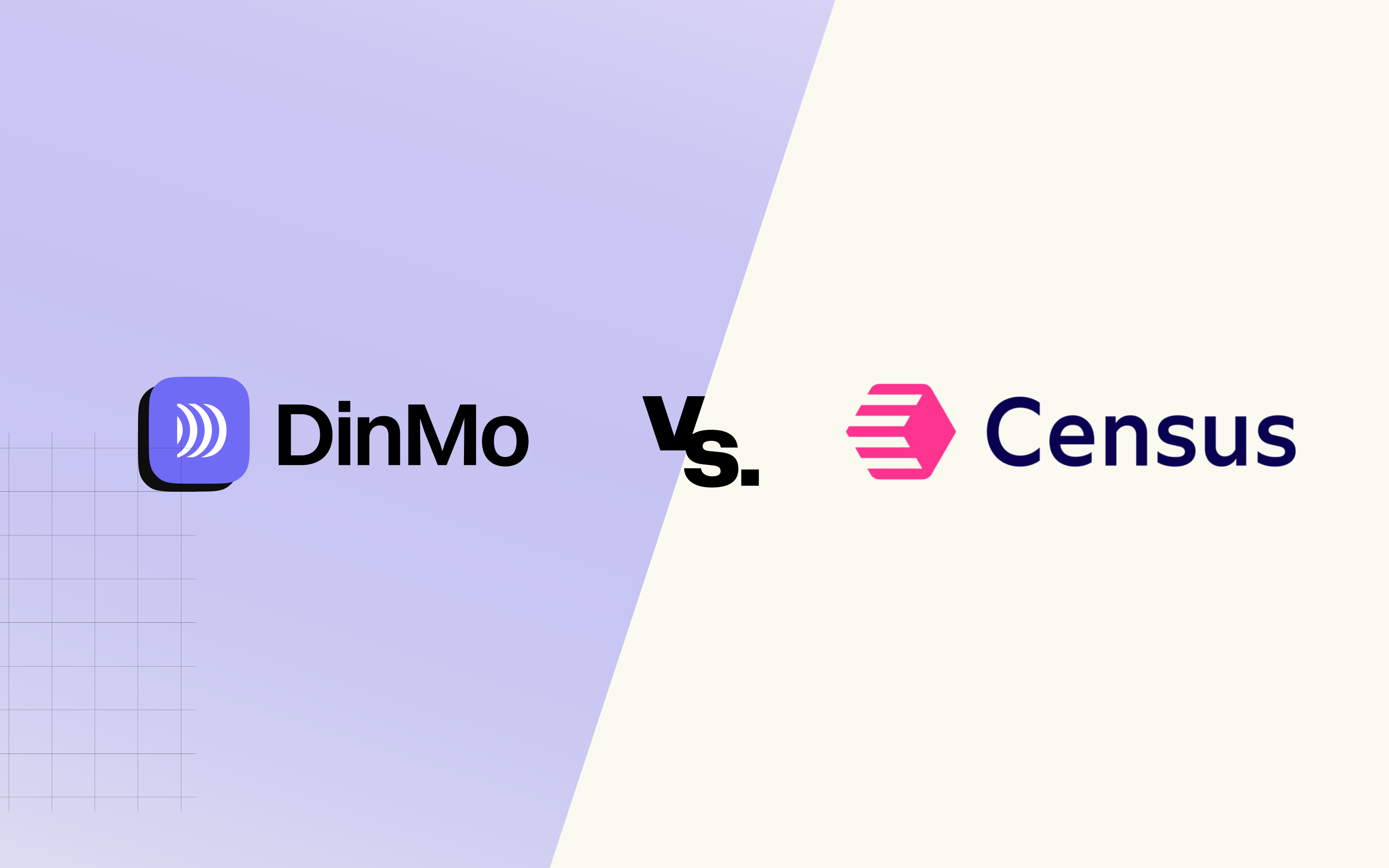
Compare DinMo and Census
Earlier, Boomi announced the acquisition of Rivery to strengthen its position with a combined iPaaS, ELT, CDC and Reverse ETL approach.
Extending functionality
Leaders in data integration and activation are expanding their scope. The lines between data tools and marketing tools are blurring, and Reverse ETL is now powering business-driven use cases focused on customer experience.
Airbyte, known for open-source data ingestion, is now extending into Reverse ETL to offer a full pipeline solution.
Hightouch and DinMo go even further by integrating Reverse ETL into their respective composable CDPs.
At DinMo, features like tracking, identity resolution, segmentation, predictive AI, and orchestration, go far beyond simple data activation.
The rise of composable and intelligent platforms
Reverse ETL is now the central activation layer of composable architectures.
This model offers total flexibility and native interoperability with existing tools. It ensures stronger governance through the zero-copy principle: data remains in the warehouse, with no duplication.
Companies build their data stacks by leveraging their cloud infrastructure and existing applications. This approach lowers costs, improves compliance, and accelerates implementation.
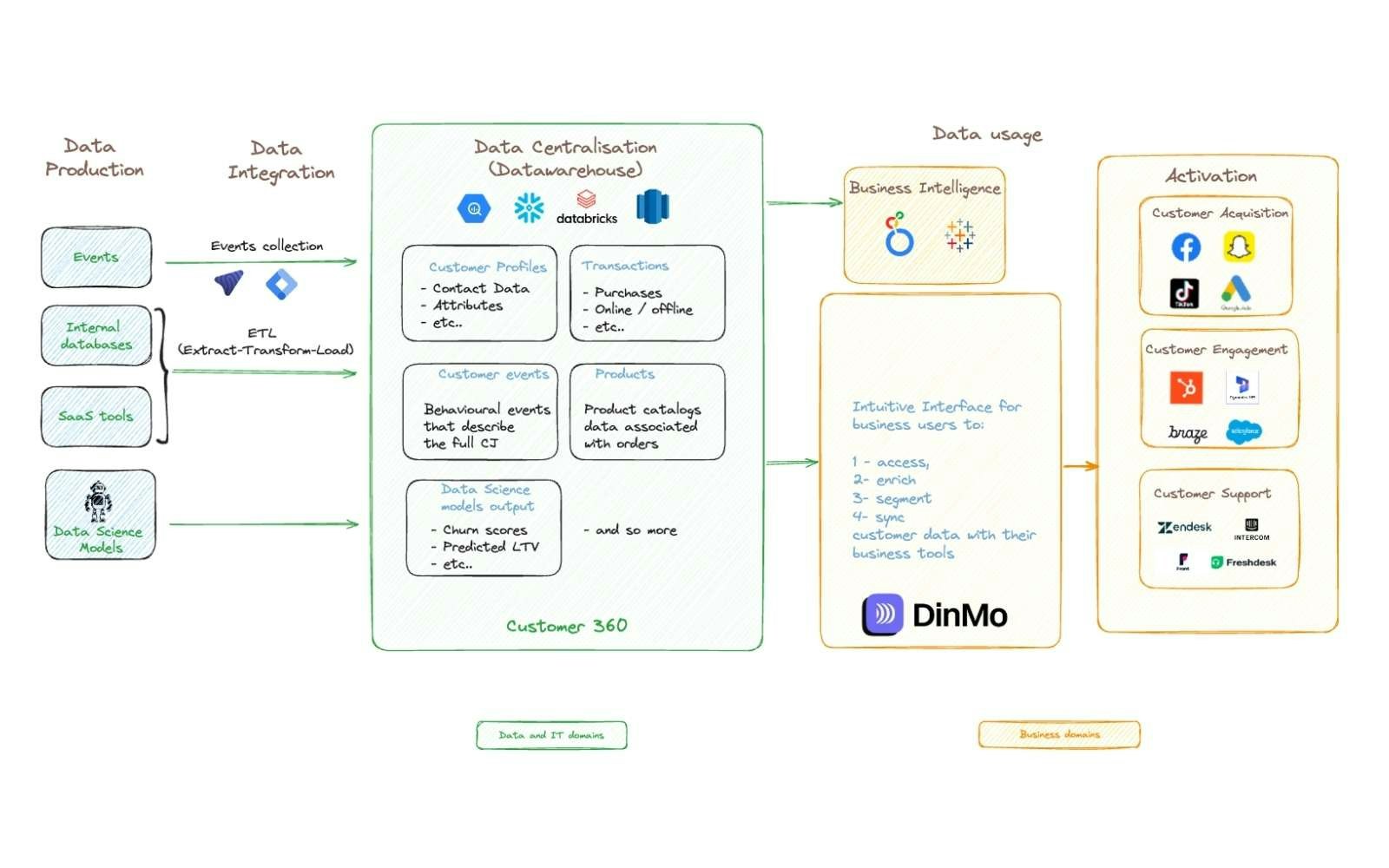
How the DinMo composable CDP works
Integrating AI into data workflows
Artificial Intelligence is becoming part of every stage of the data value chain. Platforms now combine Reverse ETL with predictive AI to improve segmentation, suggest Next Best Actions, or adjust campaigns in real time.
💡 At DinMo, this trend takes shape as an advanced solution combining Reverse ETL, AI decisioning and a no-code audience builder. Teams can deploy data-driven marketing scenarios without any technical dependency.
Among our clients, Interflora sees a 32% increase in conversions and a 17% drop in average CPC. Kappa reports a 20% rise in revenue, while Brandalley has cut 5% from its ad budget.
Market challenges in 2025
Governance, compliance and security
Governance is becoming a critical issue as data volumes grow. Businesses must ensure compliance with regulations and guarantee data quality, traceability and security throughout the lifecycle.
By leveraging data directly within the warehouse, without duplication, Reverse ETL offers a major advantage here. It can also easily absorb traffic spikes, especially in e-commerce or retail, without compromising performance or compliance.
Adoption by business teams
The other major challenge is adoption. Data tools must meet business needs and remain accessible to non-technical teams.
Organisations are looking for user-friendly no-code interfaces, with ready-to-use connectors for data activation. This approach also saves valuable time for data teams.
DinMo meets this need by empowering marketing, CRM, sales and support teams to take direct action on customer data independently. Our client Yespark confirms using our platform’s simplicity to improve segmentation and create new audiences.
Conclusion
The Reverse ETL market is entering a new phase of maturity. The rapid growth of the cloud, the rise of the Modern Data Stack 2.0, and the integration of Artificial Intelligence are placing these tools at the heart of data activation.
The boundaries between data and business functions are gradually dissolving. Organisations now favour platforms that make data usable by every team.
DinMo stands out with its modular and accessible approach. Our composable solution combines performance, compliance and ease of use.
It enables marketing teams to activate customer data without relying on technical support. Meanwhile, data teams benefit from a robust, scalable and compliant architecture.
👉 Discover how DinMo helps companies activate their customer data with Reverse ETL.
*Sources principales : Statista, Data Intelo, Grand View Research.
FAQ
What is driving the growth of the Reverse ETL market?
What is driving the growth of the Reverse ETL market?
The rise of cloud data warehouses and the growing need to activate customer data are fuelling the growth of Reverse ETL. Companies are looking for simple solutions to connect their data to operational tools, enhance personalisation, and ultimately boost performance.
How does Reverse ETL differ from ETL tools?
How does Reverse ETL differ from ETL tools?
ETL extracts and transforms data from operational systems to load it into a warehouse. Reverse ETL does the opposite: it sends enriched data from the data warehouse back to business tools (CRM, Ads, support, etc.) to make it directly usable.
Which industries adopt Reverse ETL fastest?
Which industries adopt Reverse ETL fastest?
All customer-facing industries can benefit from Reverse ETL. Retail, e-commerce, financial services, and SaaS are among the most advanced. They use it to automate their campaigns, improve customer understanding, and increase the ROI of their marketing efforts.
In terms of use cases, can an iPaaS replace a Reverse ETL?
In terms of use cases, can an iPaaS replace a Reverse ETL?
A Reverse ETL and an iPaaS (Integration Platform as a Service) serve different purposes:
- Reverse ETL transfers data from a data warehouse to business applications (such as CRMs and marketing platforms). It ensures data consistency and centralisation by relying on a single source of truth.
- iPaaS connects applications through automated workflows. For example, a Typeform submission can automatically create a contact in HubSpot.
Reverse ETL is designed for high data volumes and complex updates. In contrast, iPaaS is limited to simple point-to-point flows and often lacks scalability and robust data governance.

















